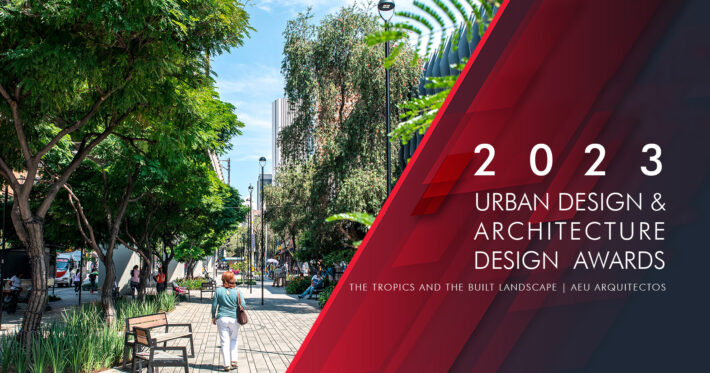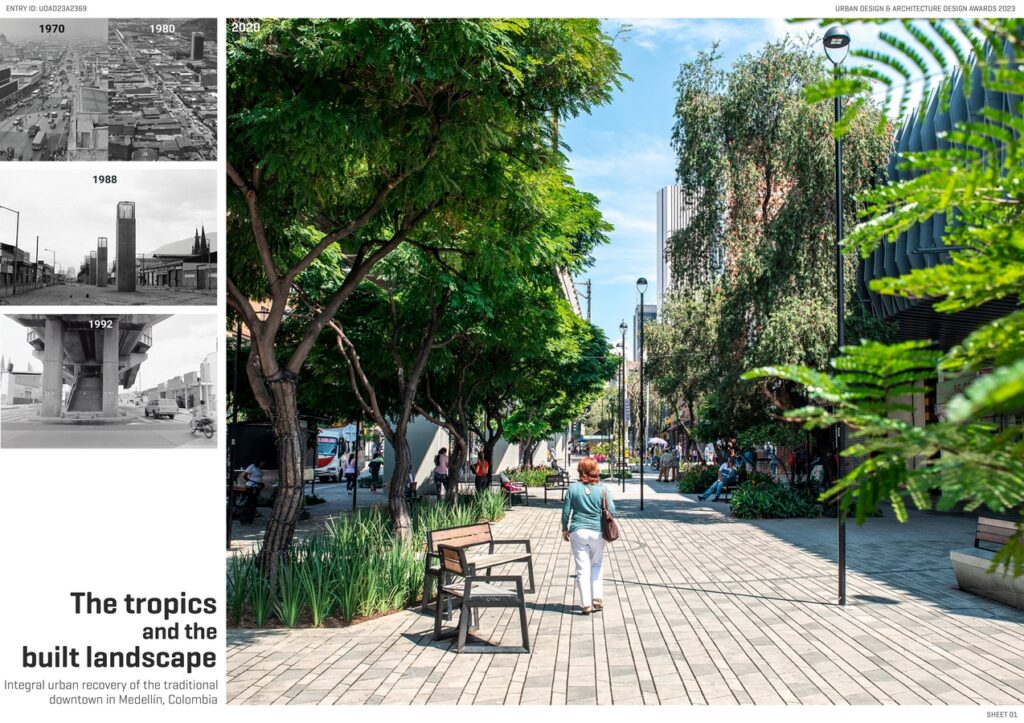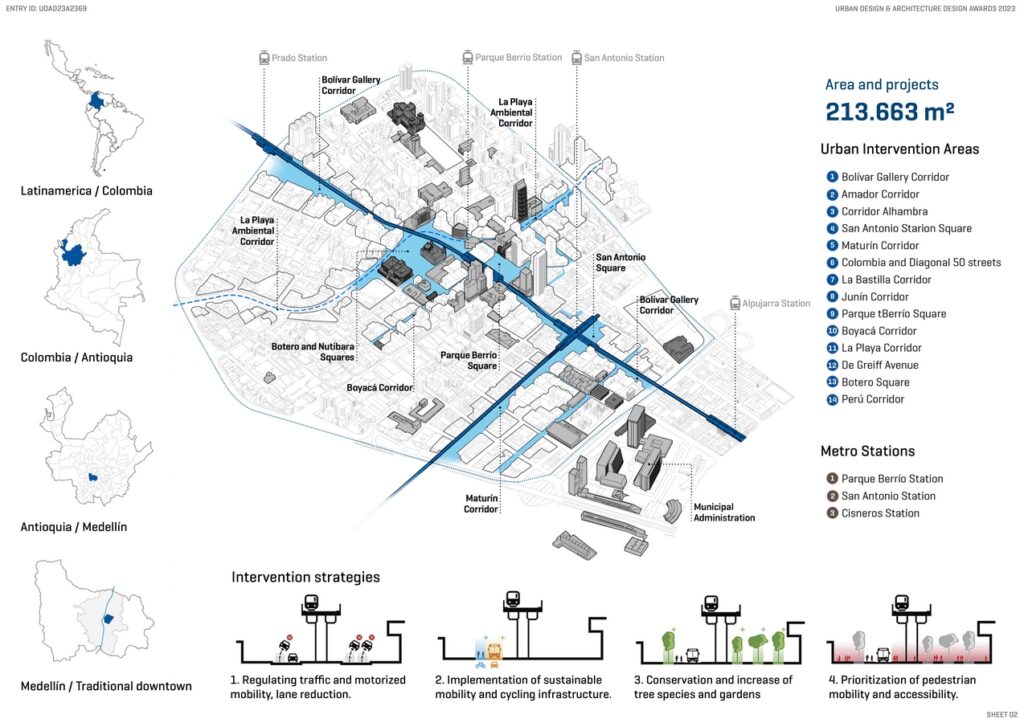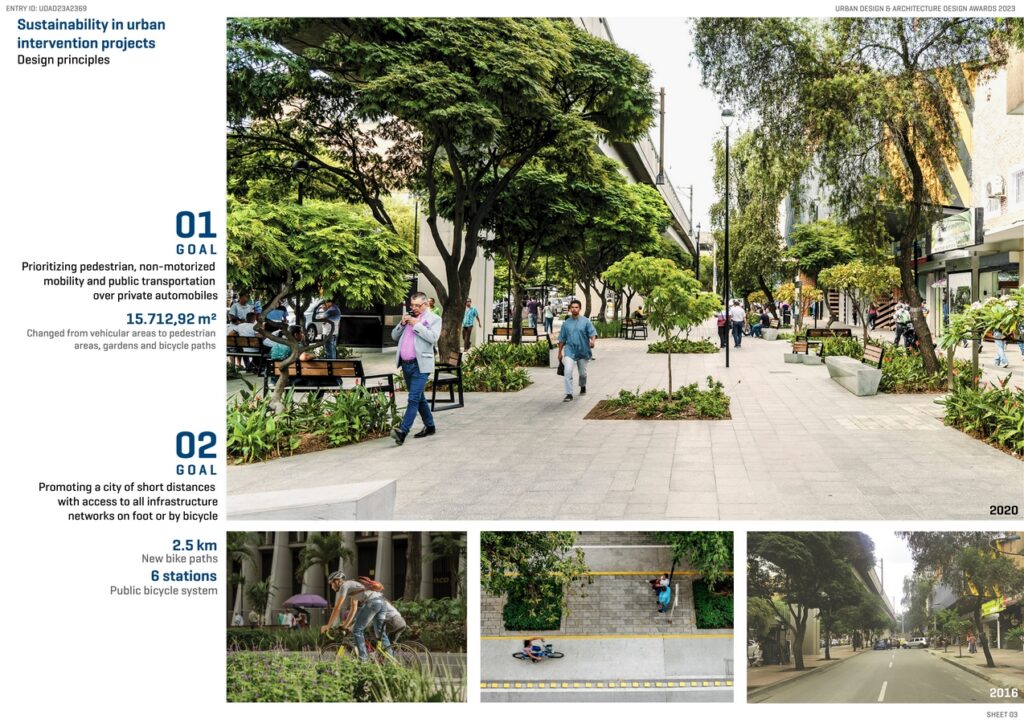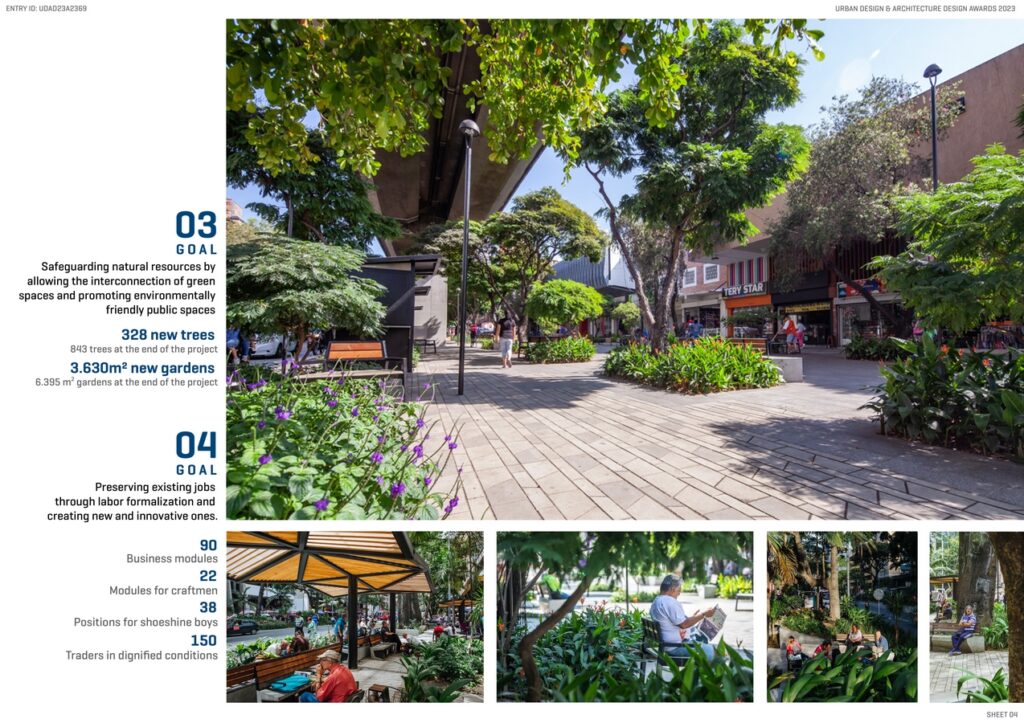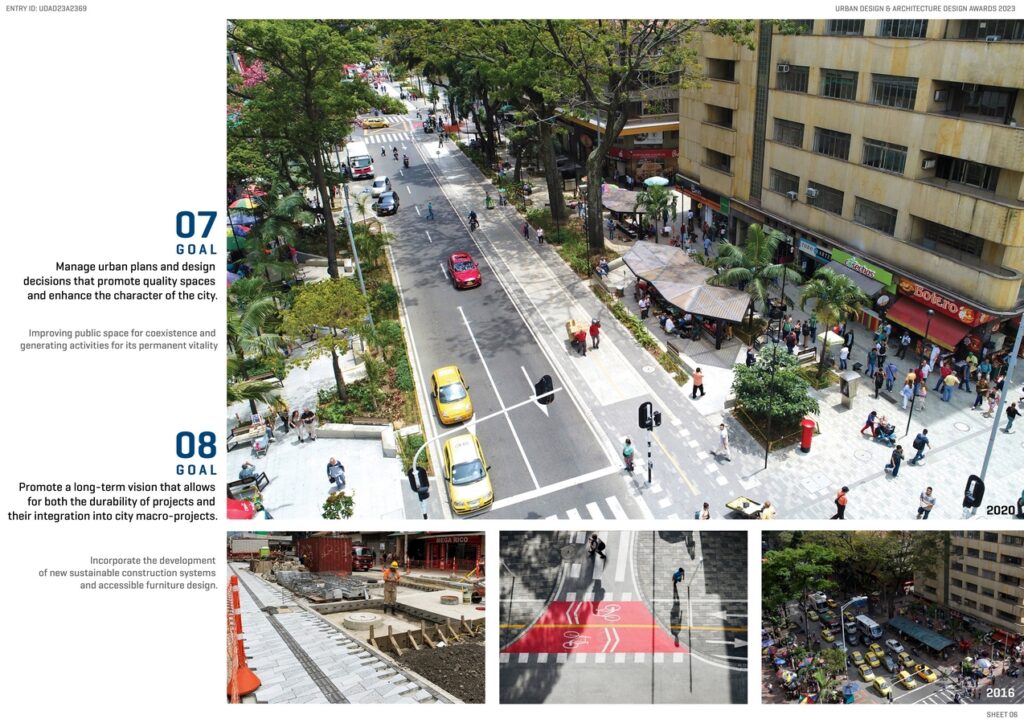Medellin is the economic center of 4 million inhabitants metropolitan area and around 1.4 million people circulate through its administrative and economic center every day. Over the last 30 years it has suffered a gradual deterioration due to high-rise railway implementation that changed downtown morphology, generated vague areas and prioritized four-lane vehicular streets under its structure.
Urban Design & Architecture Design Awards 2024: Entries Open!
Take your work to the next level. Register Now…
Silver 🏆 Winner
Urban Design & Architecture Design Awards 2023
The tropics and the built landscape
Urban Design (Built)
Firm
AEU Arquitectos
Architect/Designer
Verónica Ortiz and Carlos Puerta
Design Team
Verónica Ortiz, Carlos Puerta, Danilo Sepúlveda
Location
Medellín, Colombia
Country
Colombia
Photographer/Copyright
©Alejandro Arango
In 2012, Medellin Planning Administration Office (DAP) prioritized the commitment to reverse such condition by executing MED Centro Plan within Territorial Ordinance Plan (POT) framework, guiding city planning based on urban exercises that highlight sustainable and equitable development, by means of the following intervention strategic lines:
A new mobility that consists of mobility reorganization, preferring public and non-motorized transportation means.
Generating institutional presence with civic centers and markets network.
Rehabbing downtown with new wide-offer housing areas, recycling structures and subdividing existing buildings.
Improving public space for coexistence and generating activities for its permanent vitality.
Revitalizing the immovable cultural heritage to guarantee its permanence.
Harmonizing public and private transformative initiatives.
Strategic line 4 prioritize interventions in city’s downtown main corridors, including Bolivar Street (from San Juan Avenue to Prado Metro Station), Junin, Boyaca, Maturin, Amador and Alhambra streets, and La Playa Avenue.
In 2014, 170,577 m2 physical-spatial intervention began as part of The Traditional Downtown Integral Recovery, which seeks that projects aim to strengthen spaces for pedestrians and non-motorized mobility, public space improvement and qualification, and urban space reinforcement through urban, cultural and environmental components harmony; stimulating new ways of inhabiting and walking the traditional downtown corridors, at the same time that they make existing qualities stronger and encourage new dynamics that contribute to life quality improvement and preservation of the city’s heritage.
In addition, the commitment to intervene the main corridors is understood as a trial of traditional downtown recovery interventions, where public space requalification triggers important buildings recovery, like Nutibara Residences, Naviera Antioqueña (currently, University of Antioquia Museum), Constain Palacé, Miguel de Aguinaga, Republic Bank and Henry buildings, among others; as well as the development of new projects that provide greater-prestige and places-appropriation new dynamics, especially in ground floors, guaranteeing control over public space.
The urban project gave room to such social dynamics, as well as tried to face place’s structural urban problems, therefore, it dealt not only with pavements intervention and outdoor furniture provision, but generating civilizing codes and consolidate rooted spaces through inhabitants’ self-recognition, memory and identity.
Furthermore, urban sustainability criterion becomes the guiding axis of the intervention project, deriving in 6 fundamental axes that rule the interventions:
Prioritize pedestrian accessibility and mobility.
Promote bicycle transportation system.
Regulation and reduction of vehicular lanes.
Prioritize the natural environment.
Articulate all mobility systems.
Establish a clear relationship with existing buildings.
These 6 premises allow designing a project that builds a new urban landscape, in which a relationship between inhabitants and their place of identity is noticeably established. In our context, as tropical and no-seasons country, nature strongly bursts into our city, allowing us to clearly create a more balanced relationship between the built-environment and the natural-environment, to convert vehicular prioritized places into integral, functional and balanced urban corridors, both from the sustainable mobility component and its natural, vibrant and exotic component; filling with meeting, daily life and the enjoyment places for its citizens, seeking to generate a new downtown perception as a space for innovation, and showing the city as contemporary, social engine, cultural container and economic center.


